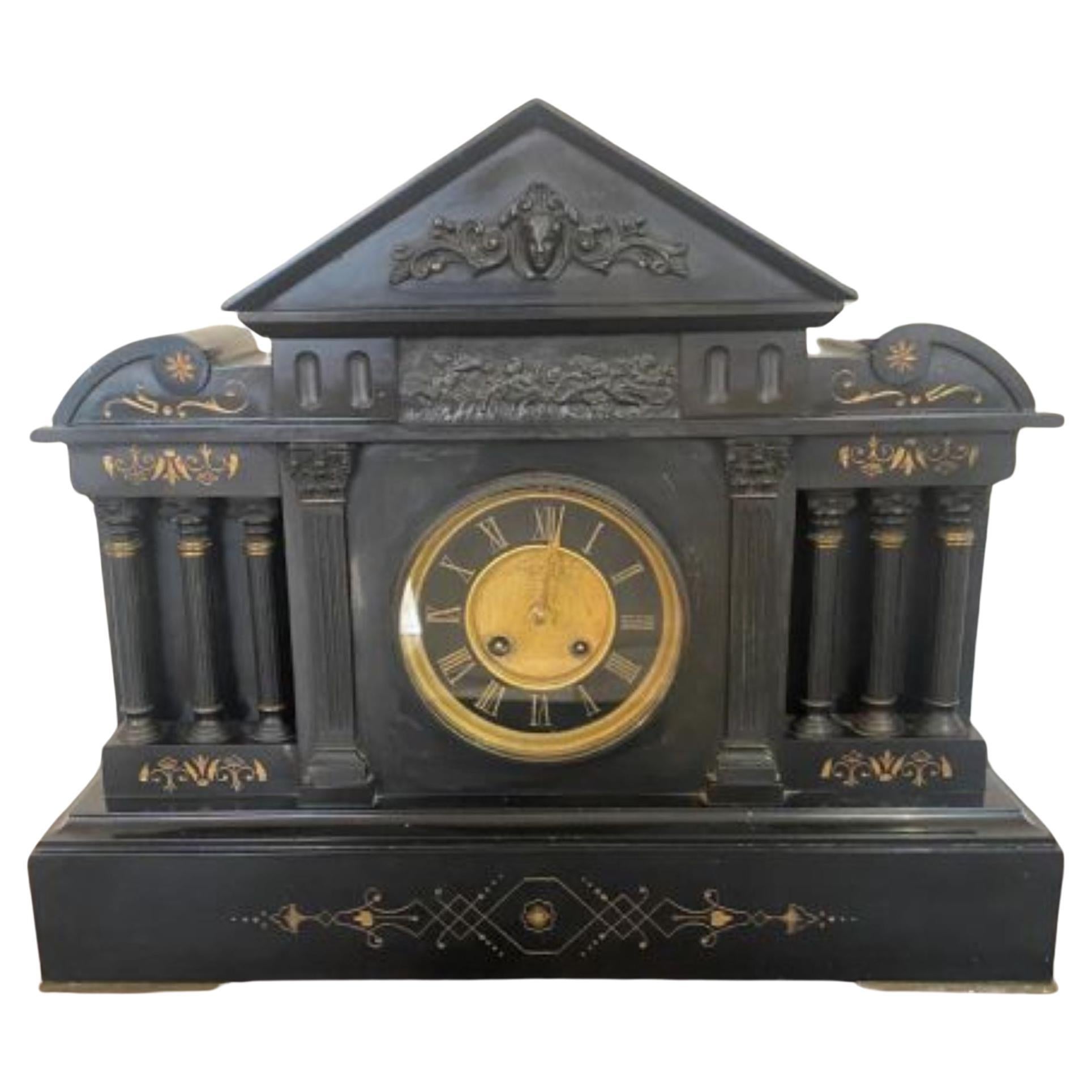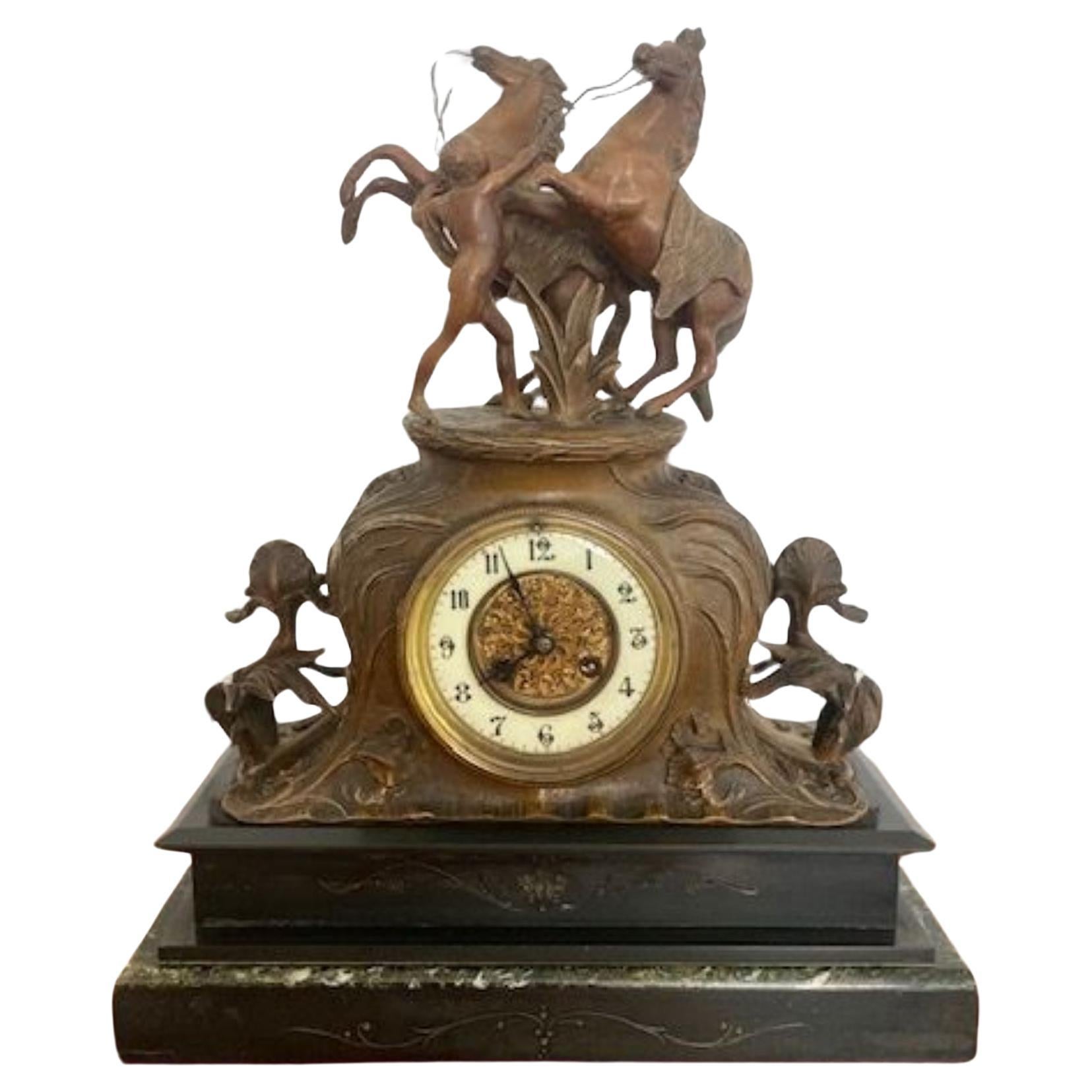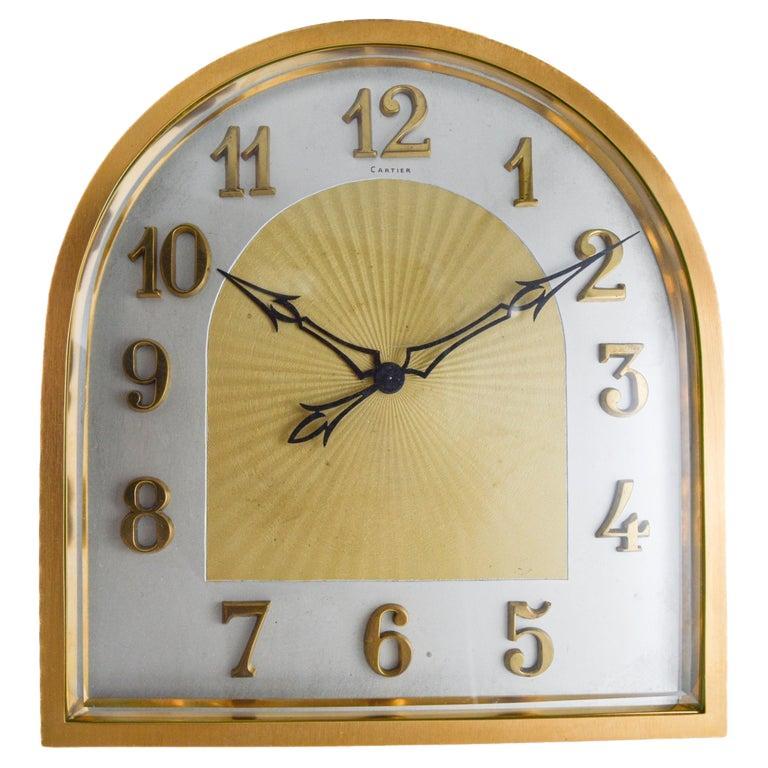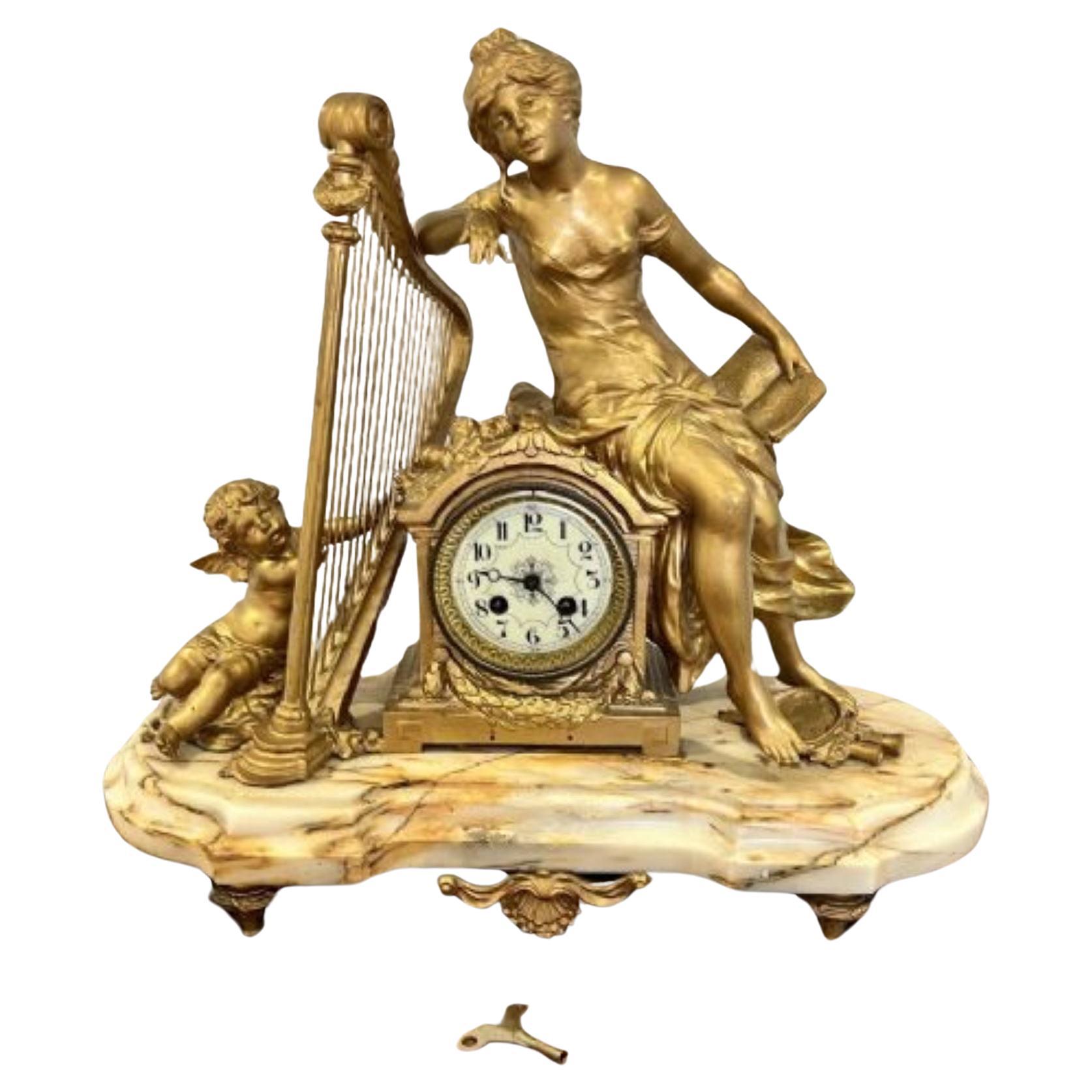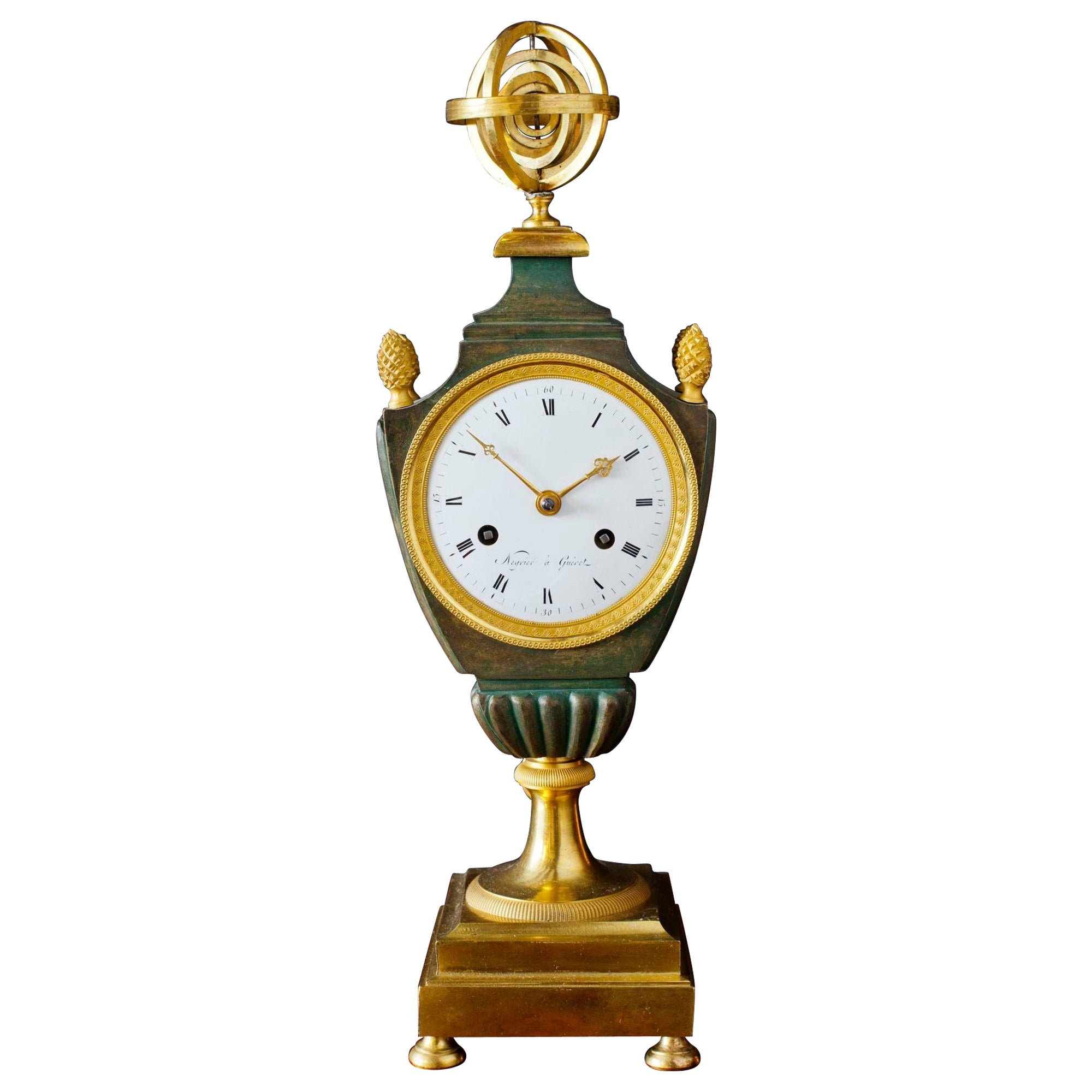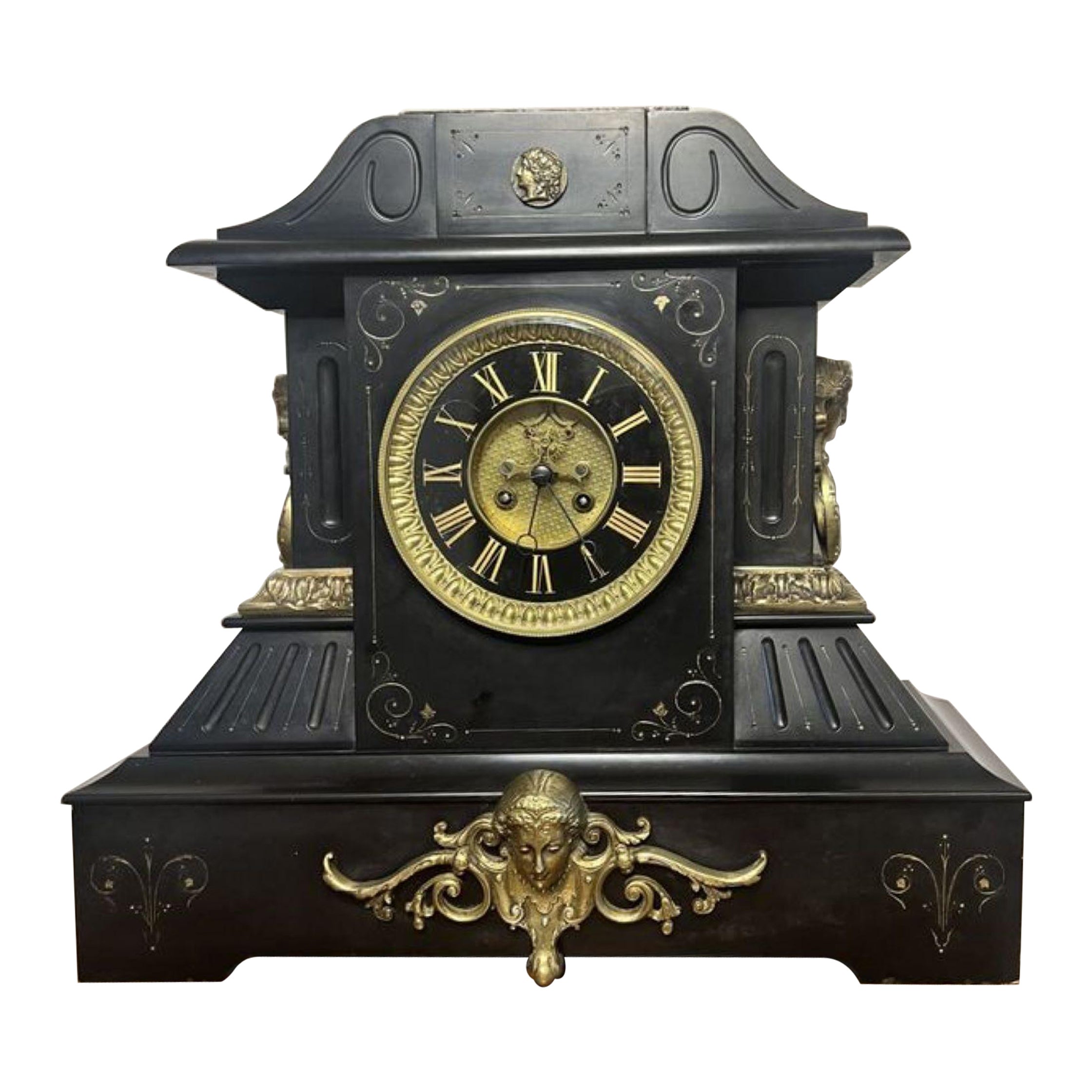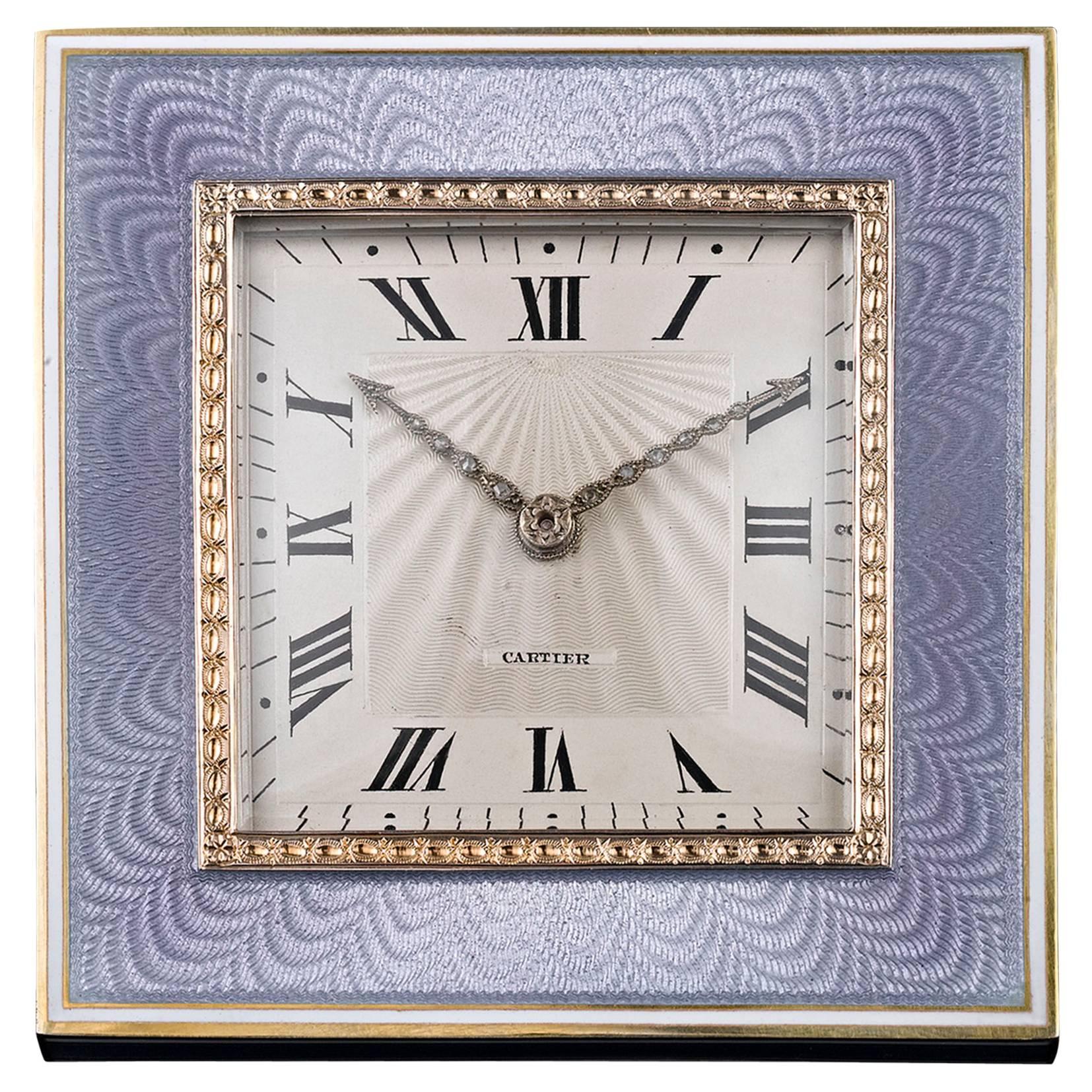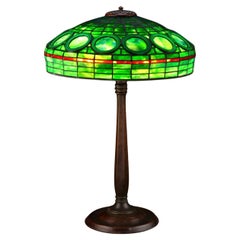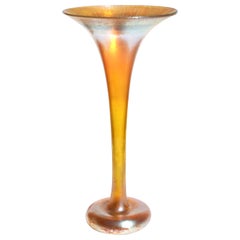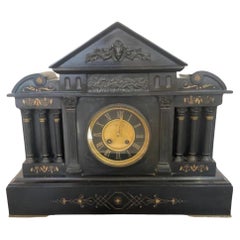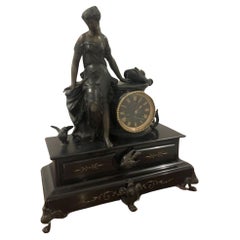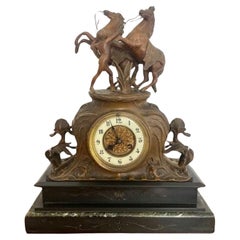
Rare Large Cartier Mantle Clock
View Similar Items
Rare Large Cartier Mantle Clock
About the Item
- Creator:Cartier (Clockmaker)
- Dimensions:Height: 10.4 in (26.42 cm)Width: 9.2 in (23.37 cm)Depth: 3.2 in (8.13 cm)
- Style:Classical Roman (In the Style Of)
- Materials and Techniques:Bronze,Cast
- Place of Origin:
- Period:1980-1989
- Date of Manufacture:1980
- Condition:
- Seller Location:Dallas, TX
- Reference Number:1stDibs: LU1774212079461
Cartier
For its extraordinary range of bracelets, watches, rings and other adornments, French luxury house Cartier is undeniably one of the most well known and internationally revered jewelers in the world among clients both existing and aspirational.
Perhaps 1847 was not the ideal time to open a new watchmaking and jewelry business, as the French Revolution was not kind to the aristocracy who could afford such luxuries. Nevertheless, it was the year Louis-François Cartier (1819–1904) — who was born into poverty — founded his eponymous empire, assuming control of the workshop of watchmaker Adolphe Picard, under whom he had previously been employed as an assistant. Of course, in the beginning, it was a relatively modest affair, but by the late 1850s, Cartier had its first royal client, Princess Mathilde Bonaparte, niece of Napoleon Bonaparte, who commissioned the jeweler to design brooches, earrings and other accessories.
Under the leadership of Louis-François’s son, Alfred, who took over in 1874, business boomed. Royalty around the world wore Cartier pieces, including Tsar Nicholas II of Russia, the Maharaja of Patiala and King Edward VII, who had 27 tiaras made by the jewelry house for his coronation in 1902 and issued Cartier a royal warrant in 1904. (Today, the British royal family still dons Cartier pieces; Kate Middleton, Duchess of Cambridge, regularly sports a Ballon Bleu de Cartier watch.)
Cartier’s golden years, however, began when Alfred introduced his three sons, Louis, Pierre and Jacques, to the business. The brothers expanded Cartier globally: Louis reigned in Paris, Pierre in New York and Jacques in London, ensuring their brand’s consistency at their branches across the world. The trio also brought in such talents as Charles Jacqueau and Jeanne Toussaint.
One of Cartier’s earliest major successes was the Santos de Cartier watch — one of the world's first modern wristwatches for men. (Previously, a large number of people were using only pocket watches.) Louis designed the timepiece in 1904 for his friend, popular Brazilian aviator Alberto Santos-Dumont, who wanted to be able to check the time more easily while flying.
Cartier’s other famous timepieces include the Tank watch, which was inspired by the linear form of military tanks during World War I, and the so-called mystery clocks. Invented by watchmaker and magician Jean-Eugène Robert-Houdin and later crafted exclusively for Cartier in the house’s workshop by watchmaker Maurice Couët, the mystery clocks were so named because the integration of glass dials on which the clocks’ hands would seemingly float as well as structures that are hidden away within the base give the illusion that they operate without machinery.
On the jewelry side of the business, Cartier’s internationally renowned offerings include the Tutti Frutti collection, which featured colorful carved gemstones inspired by Jacques’s trip to India and grew in popularity during the Art Deco years; the panthère motif, which has been incorporated into everything from brooches to rings; and the Love bracelet, a minimal, modernist locking bangle inspired by medieval chastity belts that transformed fine jewelry.
While the Cartier family sold the business following the death of Pierre in 1964, the brand continues to innovate today, renewing old hits and creating new masterpieces.
On 1stDibs, find a growing collection of contemporary and vintage Cartier watches, engagement rings, necklaces and other accessories.
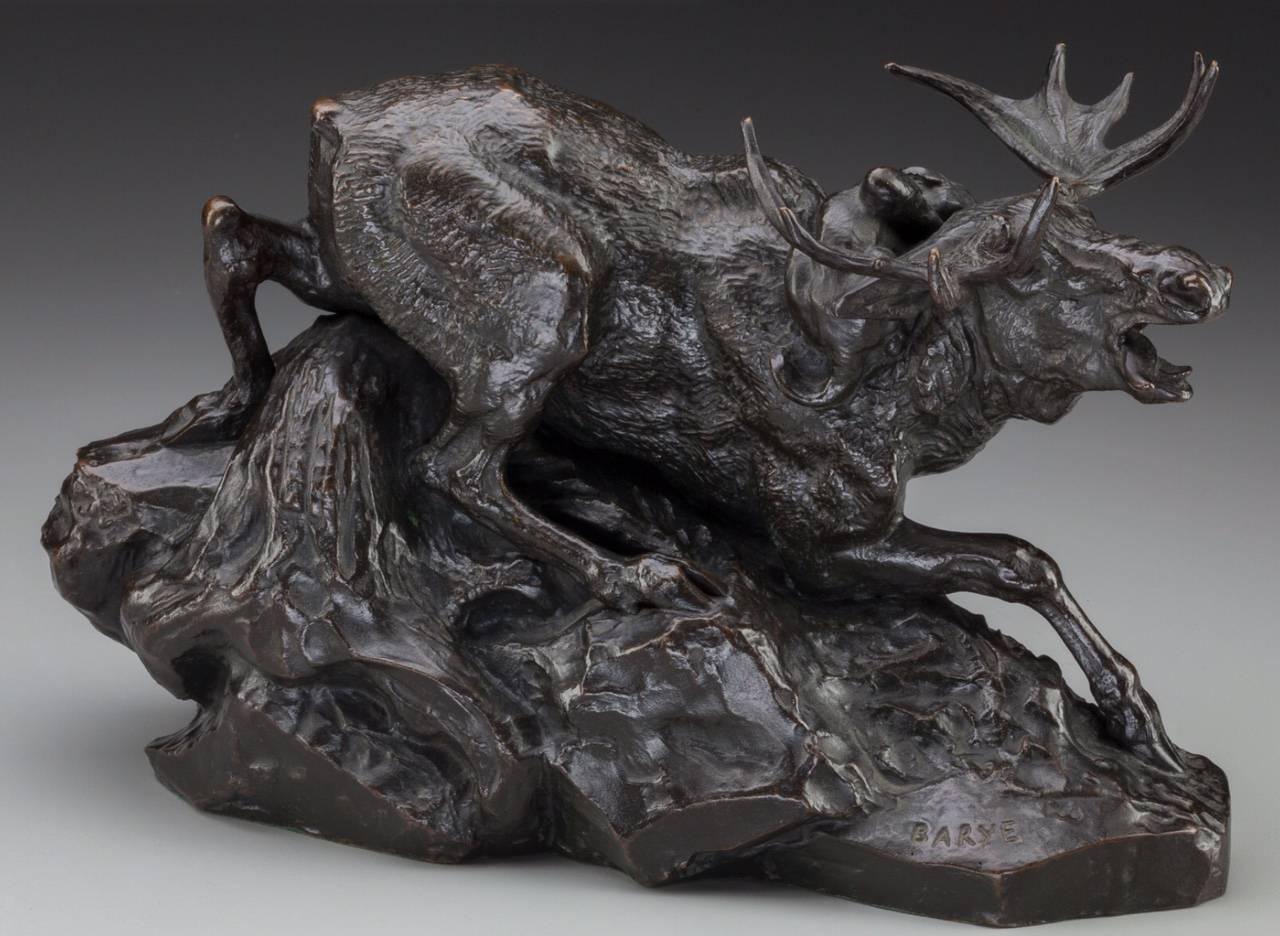
- Rare Tiffany Studios “Jade Ring” Table LampBy Tiffany StudiosLocated in Dallas, TXRare Tiffany Studios Leaded Glass and Patinated Bronze Geometric Table Lamp, circa 1910. This is a rare one of a kind early Tiffany Studios larg...Category
Antique Early 1900s American Art Nouveau Table Lamps
MaterialsBronze
- Tiffany Studios Rare Empire Jewel Table LampBy Tiffany StudiosLocated in Dallas, TXTiffany Studios Empire Jewel Table Lamp Important and rare Tiffany Studios New York "Empire Jewel" Table Lamp, Only 2-3 known to exist and well documented in Alastair Duncans Tiffan...Category
Vintage 1910s American Art Nouveau Table Lamps
MaterialsBronze
- Large Tiffany Studios Gold Favrile Trumpet VaseBy Louis Comfort TiffanyLocated in Dallas, TXLarge Tiffany Studios Gold Favrile trumpet vase, 1908 Marks: 32565C L.C. Tiffany-Favrile, (applied paper label) Dimensions: Height: 16.5 inches (41....Category
Antique Early 1900s American Art Nouveau Vases
MaterialsArt Glass
- Loetz Rubin Matte Iris Handles Ewer Vase, Rare 1898By Loetz GlassLocated in Dallas, TXLoetz Rubin Matte Iris - 1898 (aka: rubin metall) Registered Model: PM I-7875 Ruby ground; metallic-bronze iridescent finish (iris) with purple highlights. Measures: Height 7.75 inches Width 4.25 inches Condition: Excellent AVANTIQUES is dedicated to providing an exclusive curated collection of Fine Arts, Paintings, Bronzes, Asian treasures, Art Glass and Antiques. Our inventory represents time-tested investment quality items with everlasting decorative beauty. We look forward to your business and appreciate any reasonable offers. All of our curated items are vetted and guaranteed authentic and as described. Avantiques only deals in original antiques and never reproductions. We stand behind our treasures with a full money back return if the items are not as described. In 1836, Johann Eisner established a glassworks in the Southern Bohemian town of Klostermühle, today part of the Czech Republic and called Klášterský Mlýn. His heirs sold the glassworks to Martin Schmid in 1849, and two years later Schmid sold it to Frank Gerstner, attorney-at-law, and his wife Susanne. Susanne was the widow (‘Witwe’ in German) of Johann Loetz, a glassmaker about whom we know very little. Gerstner transferred sole ownership to Susanne shortly before his death in 1855, and she successfully led and expanded the company during the subsequent 20 years, manufacturing mainly crystal, overlay and painted glass. In 1879, Susanne transferred the company – now called ‘Johann Loetz Witwe’ – to Maximilian von Spaun, the son of her daughter Karoline. One year later, von Spaun hired Eduard Prochaska and the two of them modernized the factory and introduced new, patented techniques and processes. The Historicist Period The first fruits of this collaboration were exciting innovations in Historicism glass, including Intarsia and Octopus glass and the very popular marbled (‘marmorisierte’) glass which imitated semi-precious stones like red chalcedony, onyx and malachite. Success at exhibitions in Brussels, Munich and Vienna were crowned by awards at the Paris World’s Exposition in 1889. In 1897, von Spaun first saw Tiffany Favrile glass exhibited in Bohemia and Vienna, and this convinced him that the art nouveau style was also the way to go for Loetz Witwe. The next eight years were to be the most artistically significant and profitable period in the entire history of the company. The Art Nouveau Period – the Glory Years Loetz Paris-Expo1900Loetz Paris-Expo1900The glassworks created large numbers of its own new designs of iridescent, trailing art nouveau glass, sometimes in collaboration with well-known artists and designers like Marie Kirschner and Franz Hofstötter (aka Franz Hofstätter). The zenith of Loetz art nouveau glass was epitomized by the so-called Phänomen series of designs, much of it designed by Hofstötter, which won a Grand Prix (alongside Tiffany, Gallé, Daum and Lobmeyr) at the Paris World’s Exposition in 1900. The company’s success during this period had two prime drivers – the technical expertise of Prochaska and the business acumen of von Spaun. Loetz Witwe created many of its own designs, and also supplied glass commissioned by major customers like E. Bakolowits (Vienna) and Max Emanuel...Category
Antique 1890s Czech Art Nouveau Vases
MaterialsArt Glass
- Large Emile Galle Scenic Cameo VaseBy Emile GalléLocated in Dallas, TXEmile Galle scenic wheel carved and acid etched cameo vase. A beautiful and tall cameo vase by Galle. The 18 - 1/2” tall vase has a background of muted yellow glass near the base, which progresses to blue/gray at mid-vase, and then peach towards the top. Brown, cameo cut trees are generously displayed across the body of the vase, with the addition of a boat in the lake. Signed "Galle". Dimensions: 18 - 1/2” x 10” x 8”. Condition: Very good Émile Gallé (8 May 1846 in Nancy – 23 September 1904 in Nancy) was a French artist and designer who worked in glass, and is considered to be one of the major innovators in the French Art Nouveau movement. He was noted for his designs of Art Nouveau glass art and Art Nouveau furniture, and was a founder of the École de Nancy or Nancy School, a movement of design in the city of Nancy, France. Gallé born on 4 March 1846 in the city of Nancy, France. His father, Charles Gallé, was a merchant of glassware and ceramics who had settled in Nancy in 1844, and his father-in-law owned a factory in Nancy which manufactured mirrors. His father took over the direction of his mother's family business, and began to manufacture glassware with a floral design. He also took over a struggling faience factory and began manufacturing new products. The young Gallé studied philosophy and natural science at the Lycée Imperial in Nancy. At the age of sixteen he went to work for the family business as an assistant to his father, making floral designs and emblems for both faience and glass. In his spare time he became an accomplished botanist, studying with D.A. Godron, the director of the Botanical Gardens of Nancy and author of the leading textbooks on French flora. He collected plants from the region and from as far away as Italy and Switzerland. He also took courses in painting and drawing, and made numerous drawings of plants, flowers, animals and insects, which became subjects of decoration. At the age of sixteen he finished the Lycée in Nancy and went to Weimar in Germany from 1862–1866 to continue his studies in philosophy, botany, sculpture and drawing. In 1866, to prepare himself to inherit the family business, he went to work as an apprentice at the glass factory of Burgun and Schwerer in Meisenthal, and made a serious study of the chemistry of glass production. Some of his early glass and faience works for the family factory at Saint-Clémont were displayed at the 1867 Paris Universal Exposition. In early 1870 he designed a complete set of dishware with a rustic animal designs for the family enterprise. During this time he became acquainted with the painter, sculptor and engraver Victor Prouvé, an artist of the romantic "troubadour" style, who became his future collaborator in the Nancy School. He enlisted for military service in the Franco-Prussian War in 1870, then was demobilised after the disastrous French defeat in 1871 and the French loss to Germany of much of the province of Lorraine, including Meisenthal where he had done his apprenticeship. Thereafter the Cross of Lorraine, the patriotic symbol of the region, became part of his signature on many of his works of art. After his demobilization Gallé went to London, where he represented his father at an exhibition of the arts of France, then to Paris, where he remained for several months, visiting the Louvre and Cluny Museum, studying examples of ancient Egyptian art, Roman glassware and ceramics, and especially early Islamic enamelled...Category
Antique Early 1900s French Art Nouveau Vases
MaterialsArt Glass
- Rare Costa Rican Jade Axe God Guanacaste Nicoya Region A.D. 1-500Located in Dallas, TXFine costa Rican Jade axe god with alligator head Guanacaste-Nicoya region, circa A.D. 1-500 Material: Jade Of celt form depicting the mythical part human, pa...Category
Antique 15th Century and Earlier Costa Rican Pre-Columbian Figurative Sc...
MaterialsJade
- Large Quality Victorian Marble Mantle ClockLocated in Ipswich, GBLarge quality antique Victorian marble mantle clock having a quality ornate marble case with a circular brass dial, original hands with a eight...Category
Antique Early 19th Century Victorian Mantel Clocks
MaterialsMarble, Brass
- Large Antique Victorian Quality Mantle ClockLocated in Ipswich, GBLarge antique Victorian quality mantle clock, having a quality bronzed smelter figural mount of a lady with birds flanked by a circular ornate clock with a brass bezel and a bevelled...Category
Antique Early 19th Century Victorian Mantel Clocks
MaterialsMarble, Brass, Bronze
- Large Antique Victorian Marble Mantle ClockLocated in Ipswich, GBLarge antique Victorian marble mantle clock having Marley horses to the top in shelter, circular clock with a porcelain dial and original hands...Category
Antique Early 19th Century Victorian Mantel Clocks
MaterialsMarble, Brass
- Cartier ClockBy CartierLocated in Long Beach, CAFACTORY / HOUSE: European Clock & Watch Co. / Cartier STYLE / REFERENCE: Art Deco Chiming Clock METAL / MATERIAL: Gilt Brass and Bronze with B...Category
Vintage 1930s Swiss Art Deco Table Clocks and Desk Clocks
MaterialsBrass
$23,400 - Bacchus Mantle ClockBy Raingo FrèresLocated in Bronx, NYThis fabulous Palace clock is designed & executed in Paris, France. The monumental clock is beautifully casted in bronze & retains its original mercury gi...Category
Antique Mid-19th Century French Mantel Clocks
MaterialsBronze, Enamel
$18,000 - Wood Mantle ClockLocated in New Orleans, LAVery ornate white washed wood mantle clock with gold details. The face is behind a functional glass door with latch. The top is crowned by an urn with a cascading laurel garland that...Category
Antique 19th Century Swedish Gustavian Mantel Clocks
MaterialsWood
$4,850
Recently Viewed
View AllRead More
How to Spot a Fake Cartier Love Bracelet
This iconic jewel has captured countless hearts with its elegant design and its amatory symbolism. Counterfeiters have taken note of the demand and created fake versions. If you’re looking for a genuine Cartier Love bracelet, it’s crucial to check all the elements for authenticity. Our guide will teach you the telltale traits of a knockoff.
The 14 Most Iconic Watches for Women
Style, craft and heritage combine to make these designs undeniable classics.
